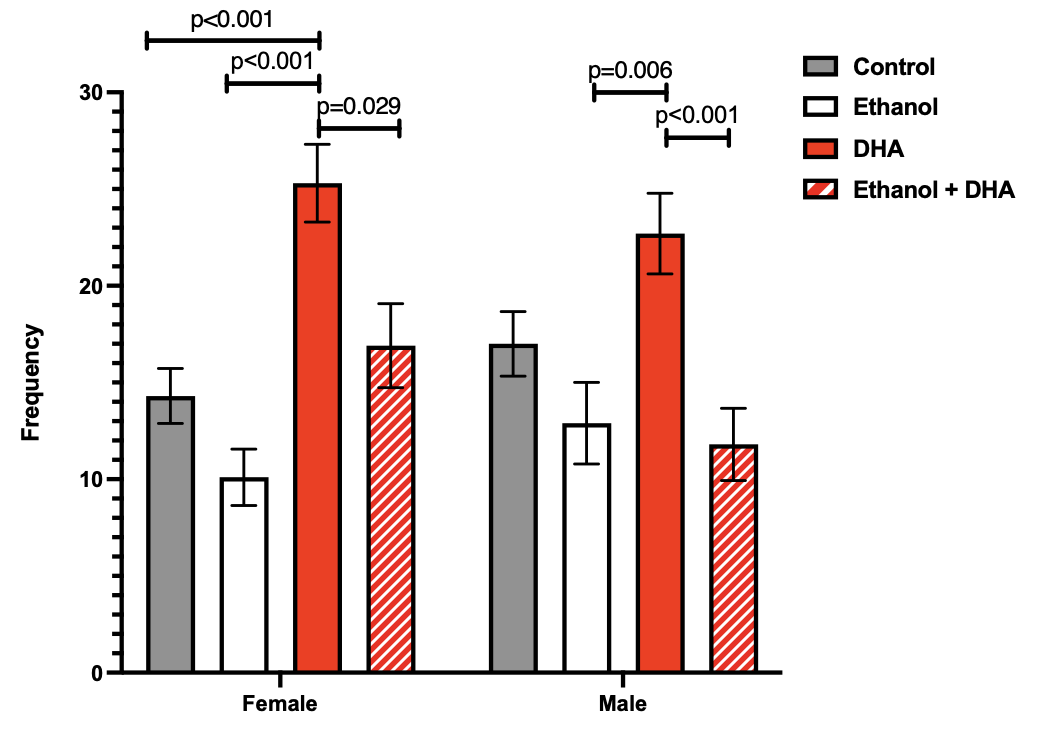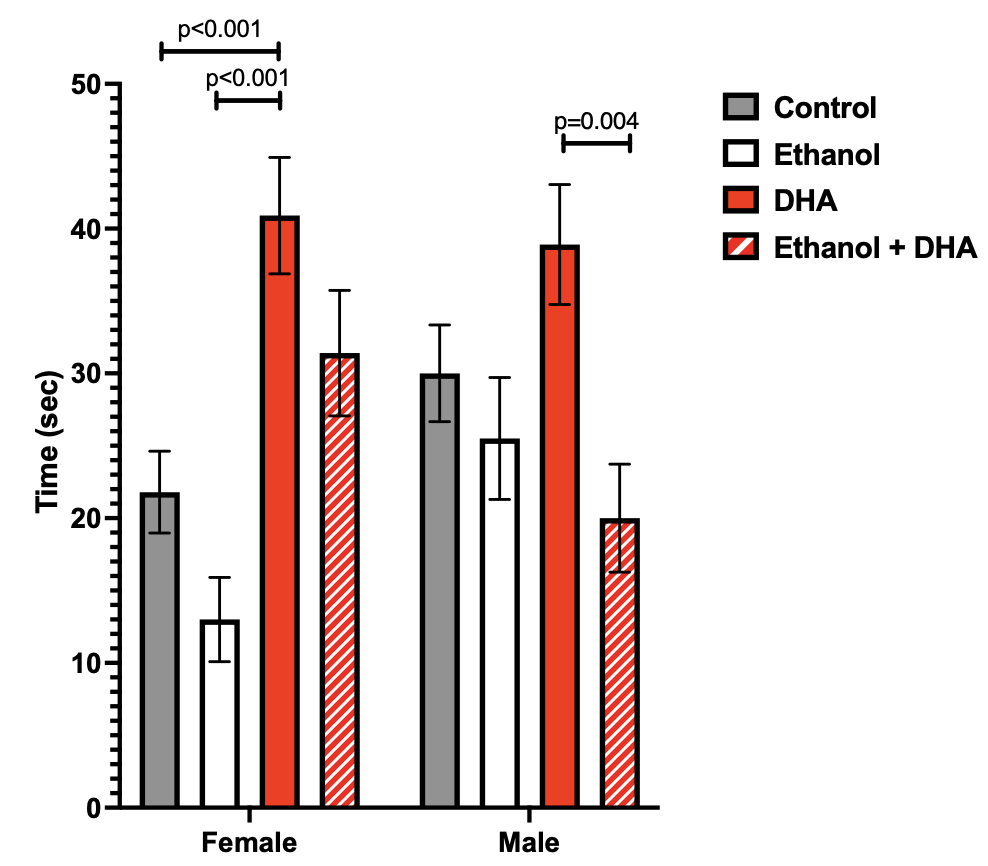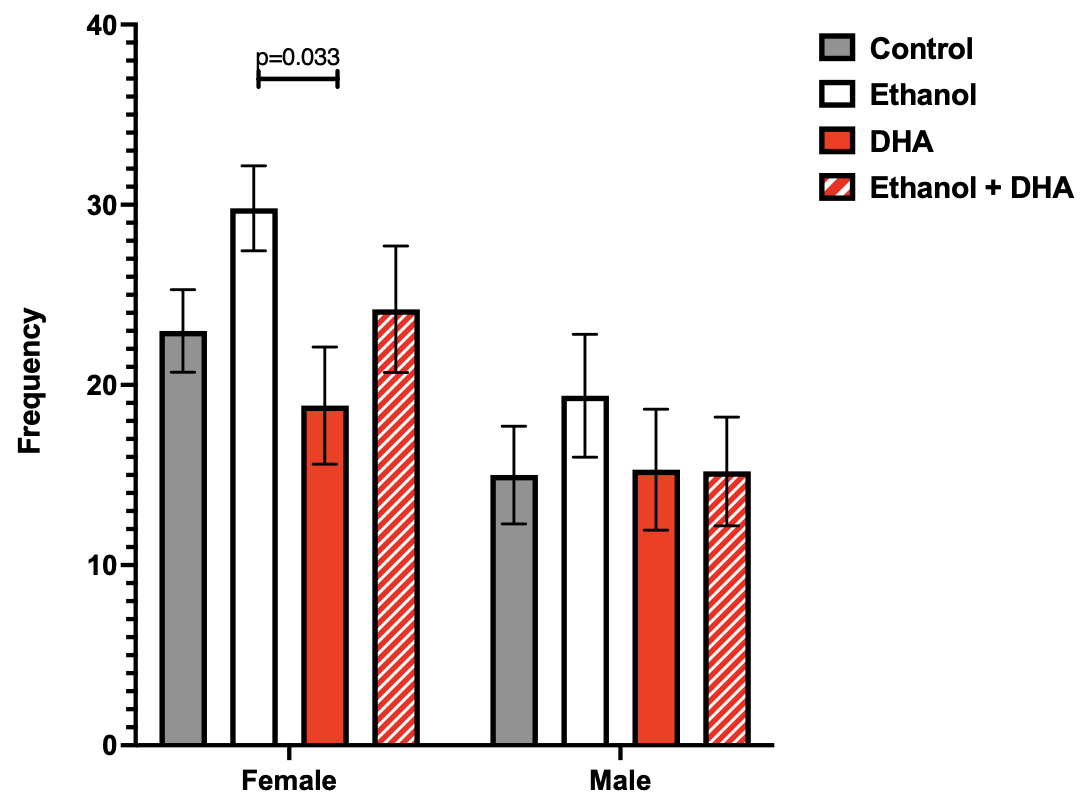Neonatal Neurology: Pre-Clinical Research
Neonatal Neurology 9: Preclinical 3
45 - Improving Neurobehavioral Outcomes of Offspring of Pregnant Rats (Dams) with DHA (Docosahexaenoic acid)
Publication Number: 45.435
- HM
Helen Martinovski, MD (she/her/hers)
Fellow
Children's Hospital of Michigan
Wyandotte, Michigan, United States
Presenting Author(s)
Background:
disability in children. Brain inflammation unresolved by the resolution lipid mediators (RLM), from alcohol consumption may be a cause of FASD. DHA is a precursor of RLM. Prenatal DHA supplementation of dams, exposed to alcohol, significantly increased the brain RLM in their offspring. Increasing brain RLM with DHA to improve neurobehavior of their pups and the potential sex differences in response to DHA among pups remains to be explored.
Objective:
< !Offspring of dams consuming ethanol (EtOH) during pregnancy will have increased anxiety.
< !Alcohol-associated neurobehavioral abnormalities will be attenuated by co-administration of DHA.
< !Neurobehavioral response to DHA may differ in male and female pups.
Design/Methods:
Pregnant Sprague Dawley rats were randomized in 4 groups: Control (maltose/dextrin), EtOH(3g/kg/d), DHA (1500mg/k/d) and EtOH (3g/k/d)+DHA (1500mg/k/d). Treatment was from gestational day 8 to 1 week postdelivery. At 4 weeks old, a total of 114 pups (50 males, 64 females) were tested for neurobehavior by Open Field Test (OFT) and Elevated Plus Maze (EPM) test. Normally, rats explore open fields, but more anxious rats spend more time in the perimeter. Additionally, more anxious rats will spend time in closed arms of EPM because they fear height and open spaces.
Results:
In the OFT, we found the mean difference of frequency in center comparing DHA to control was 8.35, DHA to EtOH l was 12.53, and DHA to DHA+EtOH was 9.65 with p-value < 0.001. Additionally, the cumulative duration mean difference for DHA to control was 13.99, DHA to EtOH was 20.66, and DHA to DHA+EtOH was 14.18 with p-value < 0.004. This shows that EtOH exposed pups had the least frequency and shortest duration in the center (Fig 1&2). In a different perspective, EtOH exposed pups significantly spent more time in the enclosed space compared to the DHA+EtOH and DHA groups (Fig. 3).
Conclusion(s):
DHA attenuated the trend toward increased anxiety associated with pre- and postnatal alcohol exposure and, when given alone, augmented exploratory behavior. The effects of DHA differed by sex, favoring female over male pups.


